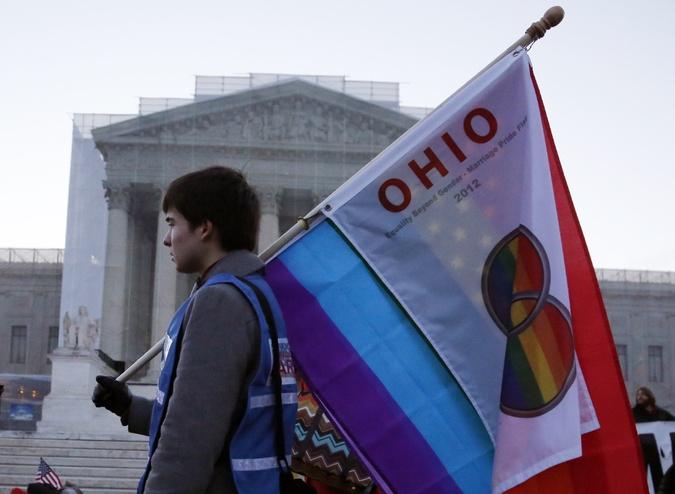Is Ohio ready to legalize same-sex marriage? This is the question that is dividing gay rights advocates, according to Trip Gabriel and Sheryl Gay Stolberg in a new piece at The New York Times. With a raft of legal changes occurring at the state-level, including most recently the legalization of same-sex marriage in New Mexico, some advocates in Ohio are attempting to put the issue up for a vote in November. But some national gay rights groups are expressing doubts about the strategy, preferring instead to wait until 2016, when the electorate will be larger and more likely to support a repeal.
most recently the legalization of same-sex marriage in New Mexico, some advocates in Ohio are attempting to put the issue up for a vote in November. But some national gay rights groups are expressing doubts about the strategy, preferring instead to wait until 2016, when the electorate will be larger and more likely to support a repeal.
A decade after 62 percent of Ohio voters supported a state constitutional amendment that banned same-sex marriage, public opinion has undergone a significant shift. Today most surveys find a majority of Americans in support of allowing gay and lesbian couples to marry. However, Southern and Midwestern states—with sizable populations of white evangelical Protestant voters—remain generally less supportive than the country as a whole.
In Ohio, the issue of same-sex marriage divides voters right down the middle. According to the PRRI’s 2013 Ohio Values Survey, 47 percent of Ohio voters favor allowing gay and lesbian people to marry, while just as many (47 percent) oppose the policy. Six percent of Ohio voters are unsure. However, when Ohio voters were asked whether the would vote to amend Ohio’s Constitution this year to allow same-sex couples to marry, a majority (51 percent) of voters were opposed to it, while 45 percent said they supported it.
There is an additional reason to believe that advocates could face an uphill climb this year in their attempt to legalize same-sex marriage. Most surveys show that opponents of same-sex marriage are more likely than supporters to say the issue is important to them, and the same is true in Ohio. Only 16 percent of Ohio voters who support same-sex marriage believe it is a critical issue facing the state, compared to 34 percent of Ohio voters who oppose it.
Most campaign professionals will tell you that in midterm elections, having poll numbers on your side is not enough and that generating more enthusiasm than your opponent is often vital. These findings suggest that same-sex marriage advocates in Ohio may have neither if they push forward in the 2014 election cycle.